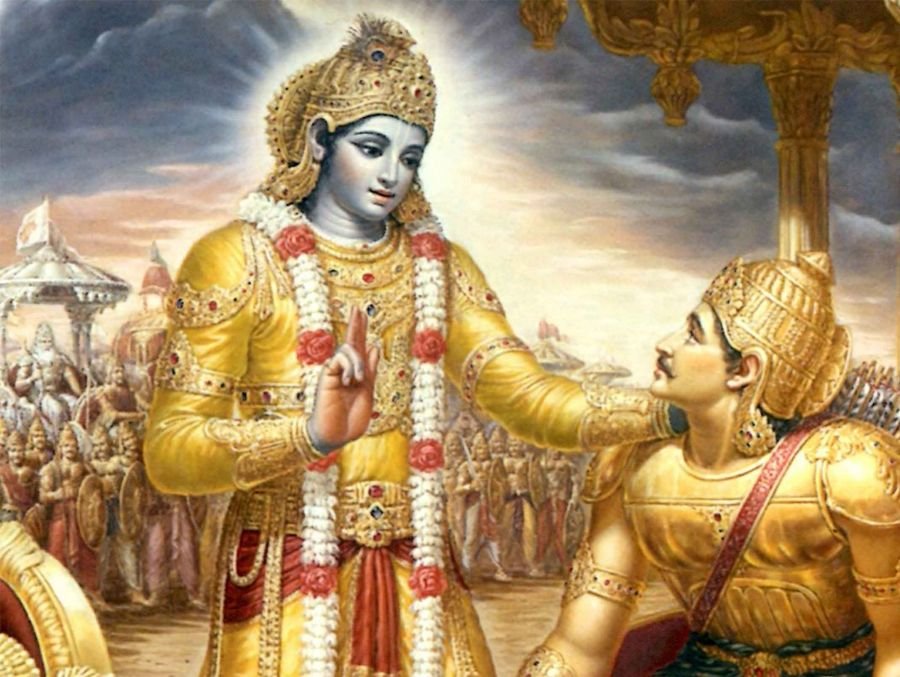(Image Courtesy Mahanidhiswami)
We Must Not Become Captivated With Sattva Guna Rather, We Must Use It To Ascend To The Transcendental Platform
तत्र सत्त्वं निर्मलत्वात्प्रकाशकमनामयम् |
सुखसङ्गेन बध्नाति ज्ञानसङ्गेन चानघ || 146||
tatra sattvaṁ nirmalatvāt prakāśhakam anāmayam
sukha-saṅgena badhnāti jñāna-saṅgena chānagha||14. 6||
Shloka Translation
BG – Ch. 13- Ver. 6:
Among these, sattva guna, the mode of goodness, is luminous and full of well-being since it is purer than the others. It bonds the soul by developing affection for a sense of bliss and wisdom, O pure one.
Explanation
The kindness mode is calm and enlightening. Sattva guna, in this way, cultivates virtue in one’s personality while also illuminating the brain with knowledge. It helps one feel calm, content, philanthropic, compassionate, helpful, quiet, and tranquil. It also promotes overall health and prevents illness. While the mode of goodness produces a sense of calm and satisfaction, attachment to it ties the soul to the material world.
Suddha sattva, the transcendental way of kindness, lies beyond these three. It is the manner of God’s divine force that exists outside of material reality. By his favour, God bestows shuddha sattva upon the soul when it becomes God-realized, making the senses, mind, and intellect divine.
Verse & what we can learn
When we experience joy, tranquilly, and calmness, we are in a state of sattva. We are alert, our minds can reason logically, we can comprehend even the most complex sentences we read or hear, and we don’t feel compelled to go out into the world.
Sattva, according to Shri Krishna, means purity, brightness, and health. There is no dirt in the shape of selfish cravings when our mind is in a condition of sattva. There is brightness because it is capable of reflecting the self’s light, or self-awareness, without hindrance. There is health because it allows us to go as close as the human body allows to our natural state of delight.
Regardless of how pleasurable or lovely this condition is, Shri Krishna tells us that sattva has the power to bind and trap us, because everyone wants to be in a state of bliss and tranquillity. Furthermore, if we anticipate that this state would go, we would wish to cling to it as tightly as possible.
Sattva can also tie us by causing us to be attached to knowledge. We become even more addicted to sattva since it allows our intellect to acquire more and more worldly information, read more books, obtain more academic certifications, and eventually pump up our ego.
Why is it possible for sattva to link us to joy and knowledge? Because we haven’t tasted true joy, we misinterpret the joy supplied by sattva. Only through meditation will we be able to reach the joy that is inherent in the “I,” in the self. All other pleasures are Prakriti – fleeting, perishable, and illusory. True happiness is found in the subject, the “I,” rather than in the object. Sattva, while preferable to rajas and tamas, is only to be utilised to bring us closer to the goal of liberation, and it must be relinquished at some point, just as the fire must be turned off once a meal is cooked.
To acquire knowledge and to implement that knowledge in life one needs to be mentally and physically active and healthy and for that daily meditation is a great tool.
There are various types of meditation like Buddhist meditation, heartfulness meditation, mindfulness meditation, meditation for stress, and each meditation benefits are countless. There is also numerous meditation techniques for beginners which help in practicing daily meditation so go ahead and start your journey towards a peaceful and balanced life.
In the next shloka Shri Krishna talks about rajo guna.
Let’s learn to live with “The Gita” via Meditation Affinity…
